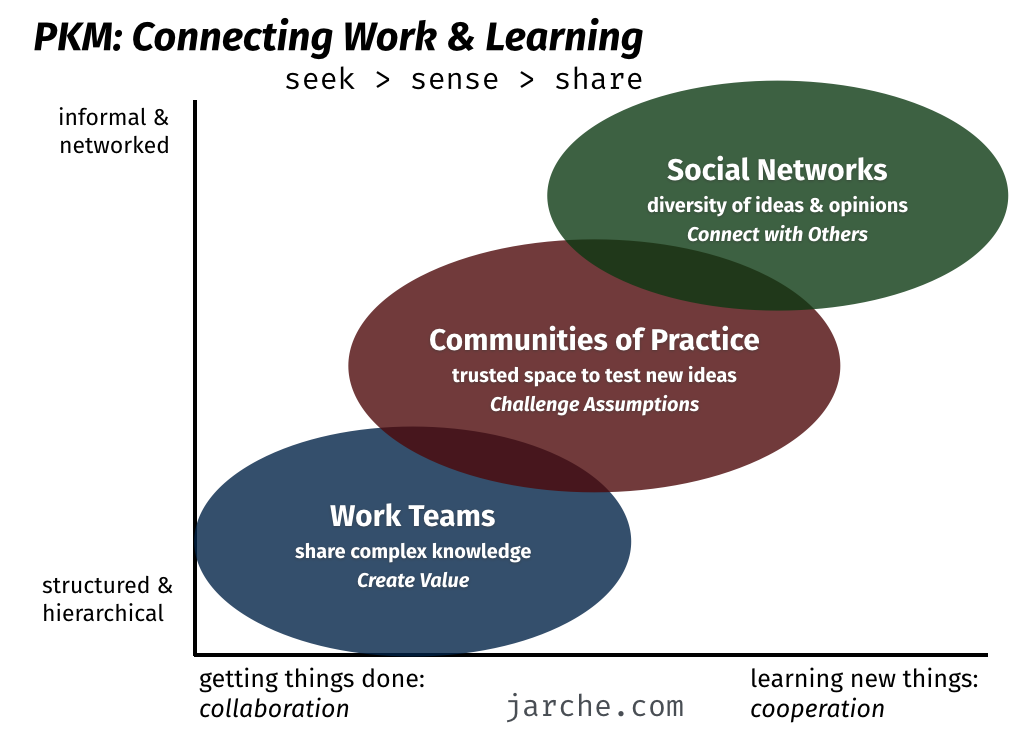In a previous post, I had stated, Personal Knowledge Management (PKM) is the art of managing your own knowledge by keeping track of what you know, what you don’t know, and what you need to know.
Harold Jarche envisions Personal Knowledge Mastery as a collection of processes designed to help us make sense of our world, work more effectively, and contribute to society. This approach empowers us to take control of our professional development and stay connected in the networked era.
Harold Jarche’s Personal Knowledge Mastery framework aims to provide a structure for knowledge workers to navigate the ever-growing sea of information. The framework consists of three parts:
SEEK → SENSE → SHARE
- Seeking involves finding information information that aligns with our goals and interests and also doing it constantly.
- Sense-making involves synthesizing information by applying what we have learned.
- Sharing involves exchanging resources, ideas, and experiences with others.

To implement this framework successfully, you need to build a strong knowledge network, experiment with the information you gather, and share your knowledge with others.
- Build a knowledge network: a group of people that you trust and rely on to provide meaningful information or insights about things you want to learn more about. A knowledge network can provide you with information about topics you are not familiar with and act as a sounding board for ideas and thoughts. The knowledge network should consist of a mix of people, not just your social circle, to avoid an echo chamber. The more diverse your network is, the greater the chances of generating better ideas.
- Experimentation is often necessary as we learn best by doing. Try reflecting on the information we gather and putting it into practice through small experiments, such as using a new writing style or representing information in a visual medium.
- Sharing includes exchanging resources, ideas, and experiences with our knowledge networks.
This post is part of a series of posts under Personal Knowledge Management 101.